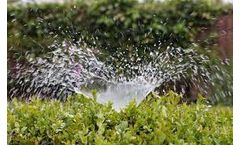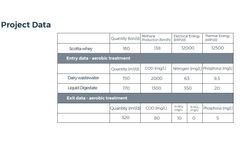Dairy Lagoon Wastewater Articles & Analysis
10 articles found
The care and feeding of the animals has produced large waste streams commonly collected and stored in lagoons. Environmentally safe handling and reuse of the lagooned wastewater is the objective of this study. ...
Fluence added anaerobic digestion to the existing WWTP at an Italian dairy farm – without halting production. Our highly innovative and technologically advanced waste-to-energy solutions provide great opportunities for dairy farms to maintain sustainable businesses. Because biogas plants use biodegradable wastes as feedstock for anaerobic digestion, companies can save money while meeting ...
In order to comply with environmental regulations, the food and beverage industry relies heavily on constant monitoring and control of wastewater and effluent, before discharge from the plant. Additionally, if process plants fail to be vigilant when it comes to monitoring all areas of waste treatment, the results can be unsuccessful. Partech’s water instruments are used by Dairy ...
The presence of Ethylenediaminetetraacetic acid (EDTA) in environments related to the disposal of dairy effluent has been investigated. An HPLC–UV analytical method was used to determine concentrations of EDTA in soil, surface and ground waters. Method detection limits were 1.5 mg/kg (dry weight) for soil, 1 μg/L for surface water and 2 μg/L for groundwater. A quasi one–dimensional vertical ...
Problem: This dairy located in Northern California is a major supplier of consumer milk products. The plant had been discharging their wastewater to the local sanitation plant untreated. Due to industrial growth in the area, the sanitation plant could no longer accept the dairy effluent. The dairy, therefore, selected and installed a Sequential Batch Reactor (SBR) system to treat their ...
EDTA is the most widely used chelating agent for removal of undesirable cations in many industrial applications such as the dairy industry. It is generally considered to be non–biodegradable by conventional wastewater treatment, thereby potentially producing an environmental health risk. Under suitable conditions, however, EDTA has been reported to be effectively degraded by micro organisms ...
Abstract California has become the leading dairy products producing state in the USA. This has resulted in farms commonly milking several thousand cows per day. The care and feeding of the animals has produced large waste streams commonly collected and stored in lagoons. Environmentally safe handling and reuse of the lagooned ...
The objective of this study was to determine the effectiveness of anaerobic digestion in the treatment of polyphenols (PP) present in olive mill wastewater (OMW) and wine distillery wastewater (WDW). Anaerobic Toxicity Assay (ATA) was conducted to assess the impact of the most representative phenolic compounds present in OMW and WDW: catechol, tannins and p-Coumaric acid, on biogas production. ...
Received for publication January 14, 2008. Agricultural wastewater treatment is important for maintaining water quality, and constructed wetlands (CW) can be an effective treatment option. However, some of the N that is removed during treatment can be volatilized to the atmosphere as ammonia (NH3). This removal pathway is not preferred because it negatively impacts air quality. The objective of ...
Ethylenediaminetetraacetic (EDTA) acid has been used as an additive to caustic agents facilitating removal of Ca, Mg and trace metals in dairy processing plants for many years. Effluents from the dairy industry are either discharged to surface waters or used in land irrigation systems. In particular, the effluents from a large dairy factory discharged to a small stream have the potential to pose ...








